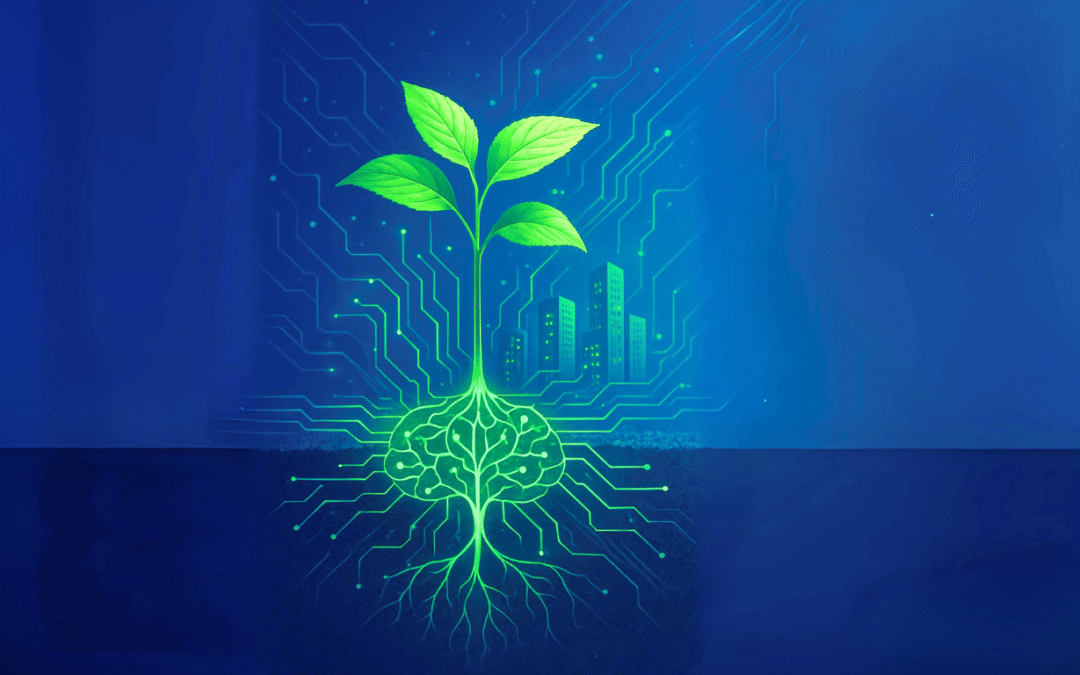IoT and the Environment: Foundations for a Sustainable Future
In recent years, the concept of IoT has revolutionized the way we think about communication and interaction between devices. The Internet of Things (IoT) consists of systems made up of smart objects and devices connected through digital networks, capable of collecting, processing, and exchanging data in real time. This interconnection enables process automation, efficiency improvement, and the creation of more responsive and intelligent environments, laying the foundations for a sustainable future in which technology and the environment collaborate synergistically.
The Natural Wood Wide Web
But what would happen if this idea found a direct parallel in the natural world? The underground network that connects plants, known as the Wood Wide Web, offers a fascinating example of how ecosystems are complex networks capable of exchanging vital information—just like the global digital network, the World Wide Web. This analogy opens up new perspectives for building a sustainable future by integrating technology with natural processes.
Roots as Communication Infrastructures
Tree roots intertwine in a dense underground network, exchanging not only water and nutrients but also chemical signals essential for survival and communication among different plants. This natural system can be compared to a kind of biological Internet, where roots act as communication cables, transmitting messages and resources from one organism to another. Understanding and valuing this network is essential for promoting a sustainable future based on deep respect for natural balance.
Biological Edge Computing: Smart Soil for a Sustainable Future
Soil hosts a variety of organisms—fungi, bacteria, and other microscopic life forms—that process and transmit information much like a distributed edge computing system. These biological “nodes” not only facilitate the transfer of nutrients but also help regulate the entire ecosystem, acting as real processing and control centers capable of responding rapidly to environmental changes. Taking this natural model as an example can guide us toward a sustainable future where technology is inspired by nature to enhance adaptability and efficiency.
Self-Regulating Ecosystem and Intelligently Designed IoT
In this sense, the ecosystem appears as an extremely efficient self-regulating system, not unlike a well-designed IoT, where every element—much like in the universal principles of quantum mathematics—collaborates to maintain the balance and overall health of the system. This analogy suggests new ways to integrate nature and technology, moving beyond simple imitation and aiming for a harmonious coevolution to ensure a sustainable future that respects and values biodiversity.
Drive2Data: Technologies for a Sustainable Future
Drive2Data is moving precisely in this direction. Among its various projects, the company is committed to creating functional connections between natural environments and artificial intelligence contexts, with the goal of safeguarding the ecosystem and promoting a development model that does not harm the environment but instead establishes the decision-making foundations for an intelligent and naturally autonomous context.
It is precisely by observing natural models, processes, and ecosystems that we draw inspiration to achieve sustainable and innovative solutions. We promote a respectful and collaborative approach toward nature, learning from it without exploiting it, with the aim of developing symbiosis between advanced neural technologies and natural systems, in harmony with nature, so that environmental protection and global well-being become inseparably intertwined.
As Janine Benyus, biologist and founder of the biomimicry movement, emphasizes:
“When the forest and the city are functionally indistinguishable, then we will know we have reached sustainability.”
This phrase perfectly captures our vision: a future where technology and nature integrate until they become a single, balanced, and environmentally respectful system.
MORE TO EXPLORE…

Data Quality: an essential element for businesses
According to the Global Data Management Community (DAMA), Data Quality is the planning, implementation and control of activities that apply data quality management techniques, in order to ensure that they are fit for purpose and meet the needs of users….. Read more
How to Fix Unstructured Data
The global data volume is growing at a dizzying level; however, there are multiple variables, models, sources, and formats that contribute to this growth. The nature of these is not homogeneous.
In this context, a significant problem emerges regarding unstructured data, which is not organized in a predefined or standardized way….


